Restoration and refurbishment of the Headquarters of the order of Architects of Romania - Bucharest Branch, Bucharest, RO
The construction, originally built in 1927 and signed by one of the exponents of the Neo-Romanian style, arch. Florea Stănculescu, was used as a family house. The main challenge of the project was to achieve, by engaging minimal resources, a new public status and functional representation of the Bucharest Branch of the Order of Architects of Romania. The theme of the project was subject of a local competition for the conversion of the house into the Headquarters of the Bucharest Branch of OAR, to include offices, a library, meeting spaces and workshop rooms. The plot is part of a historical area of Bucharest, yet it is located in a de-structured urban square. In this unequal context the building appears unaligned. Paradoxically, its unicity gives it a delicate appearance—a fragment of the interwar city placed into a current setting. We tried not to intervene visibly, therefore the project was about finding the extent to which the gesture of intervention may remain unobservable. The small house has the typical subdivision of the so-called „wagon-houses” of the city, with communicating rooms separated by glass-doors, bedrooms on the first floor, the underground and attic spaces used only as annexes. We worked towards densification, but in respect of the original subdivision, as we did not want to touch the integrity of the typology. The intervention involved a discrete extension of the main interior spaces and the establishment of new spatial and visual connections between the levels to indicate the sense of wholeness in each part of the interior. To achieve this, the slabs were punctured by “glass eyes”, and the library area was distributed between two levels, leaving the old wooden structure apparent. Likewise, we aspired to create similar openings to the context of the building. These openings can be “captured” from the garden through the fragile but expressive metallic structures made of reinforcement profiles. The extension involved lowering the underground level and the lateral extension with niches opening from the hall, creating an access door for the main entrance. The French roof was also extended slightly in order to host a meeting room, and the roof over the library was continued. We wanted to keep the existing elements as artefacts and use almost everything we had to dismantle in a new form: the broken bricks and glass mixed into the mosaic pavement, the stove tiles as heat diffusers for hot water, stove doors as natural ventilations hatches, decorated rafters to support the shelves of the library, or wooden beams for repaving.
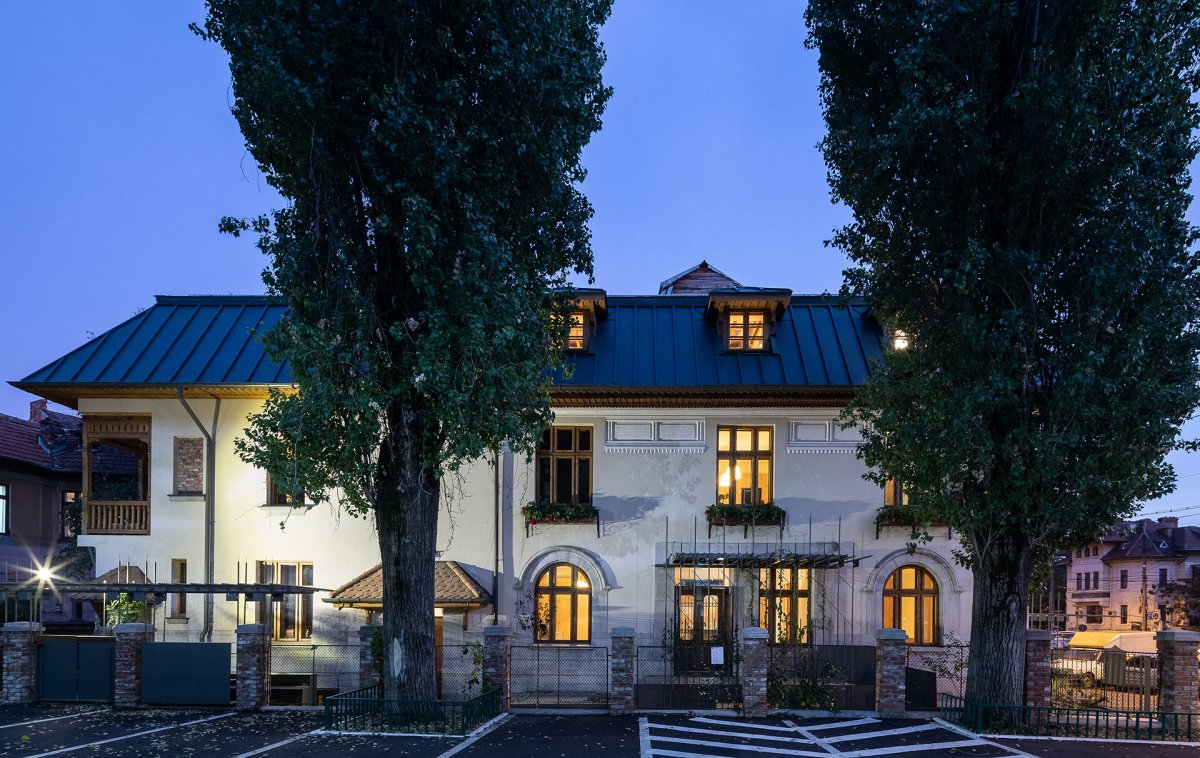
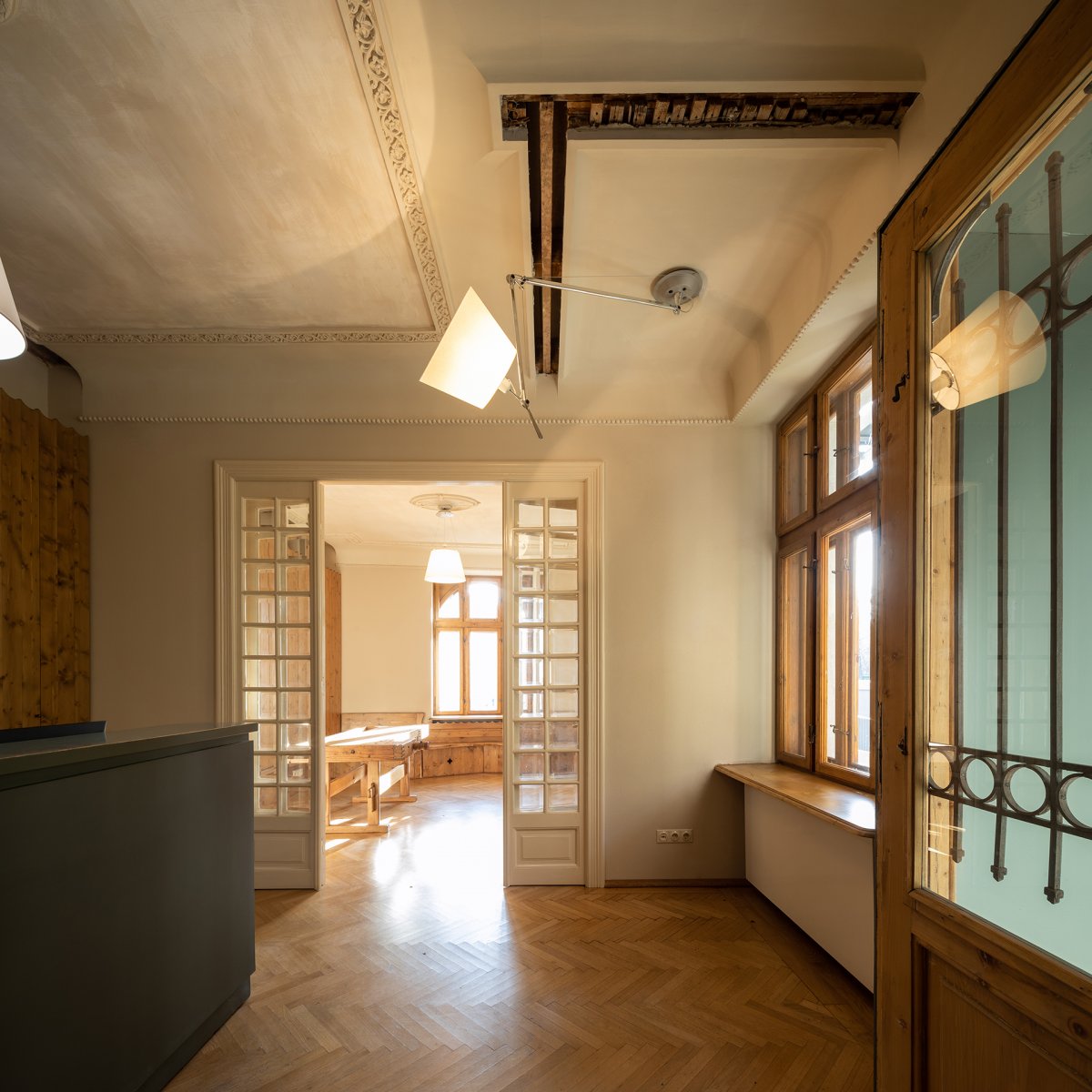
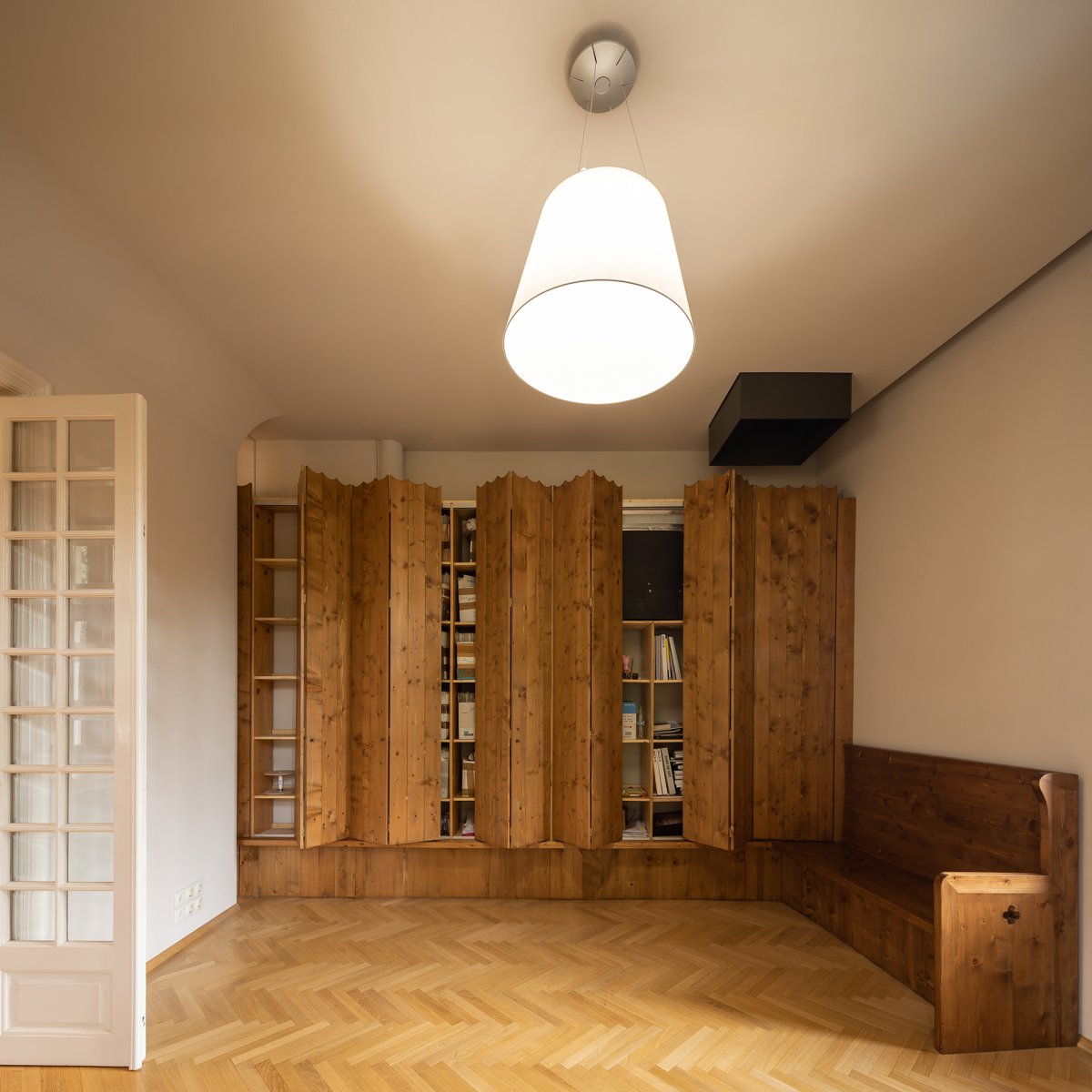
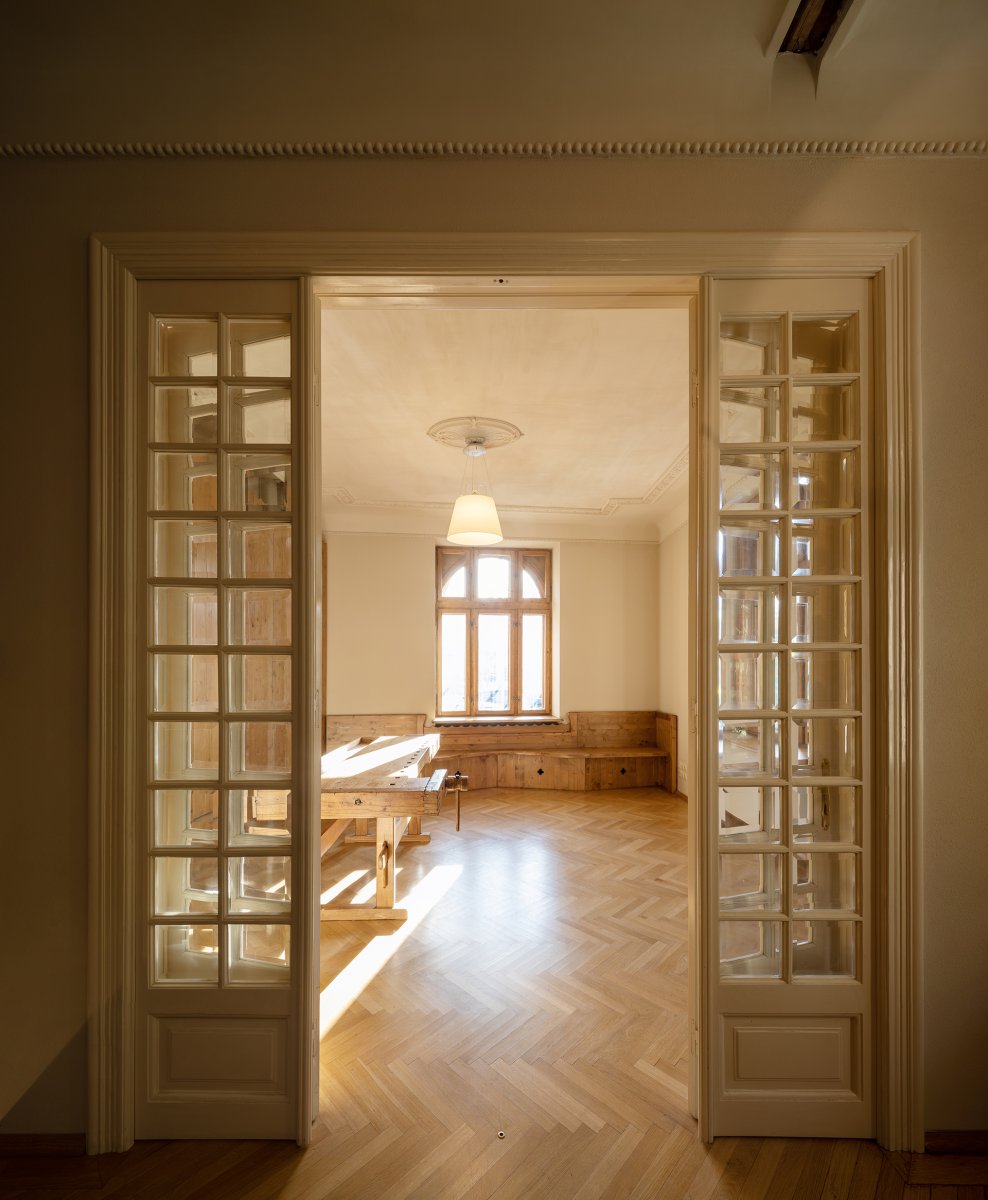
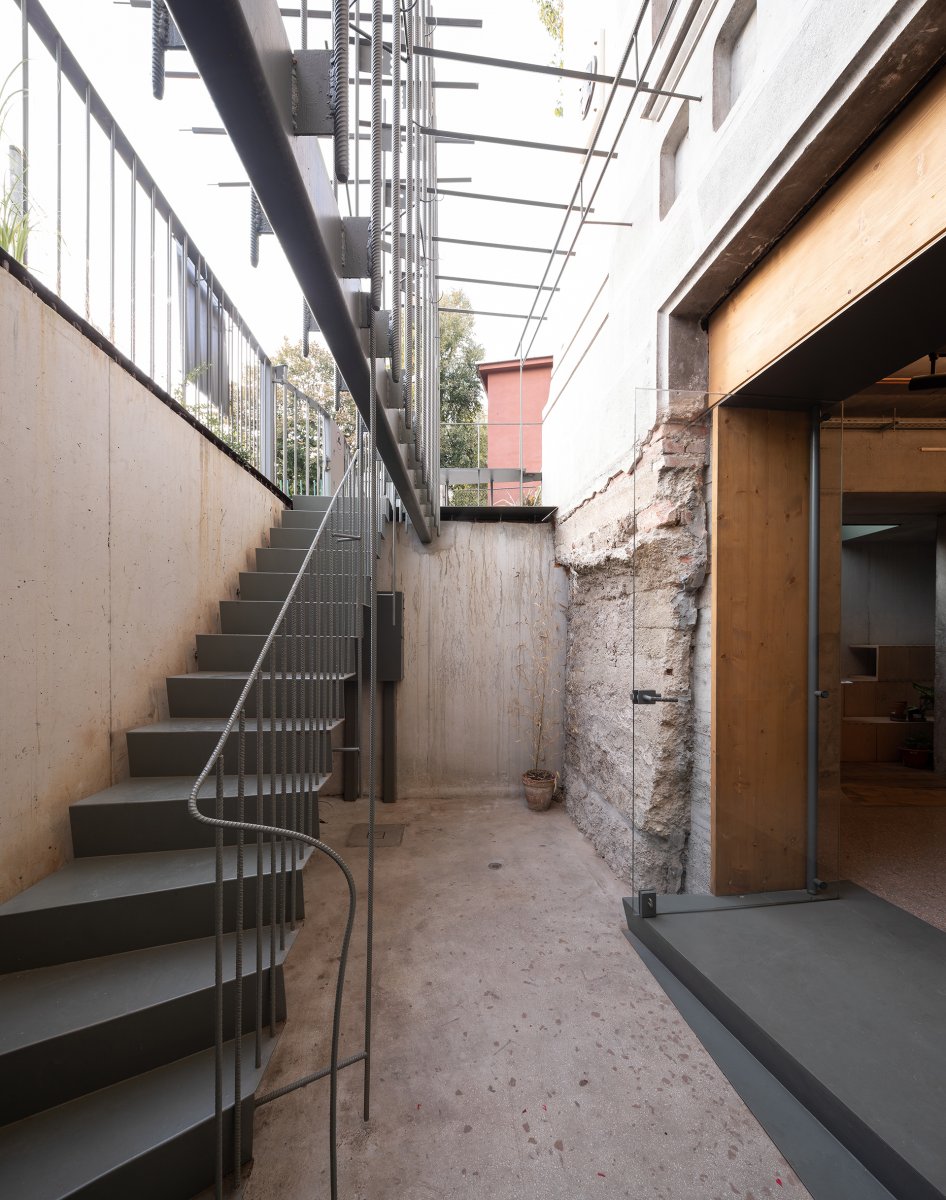
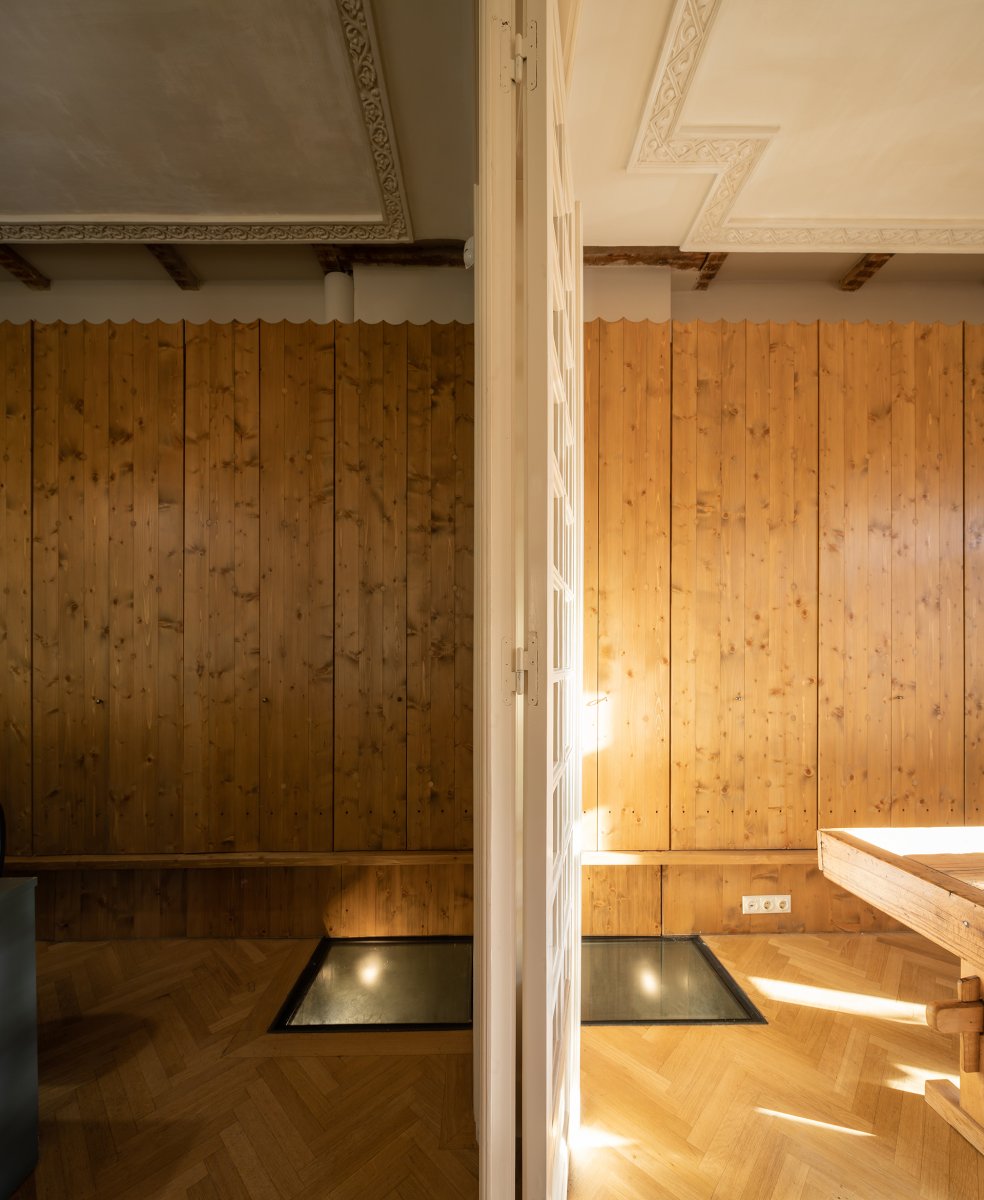
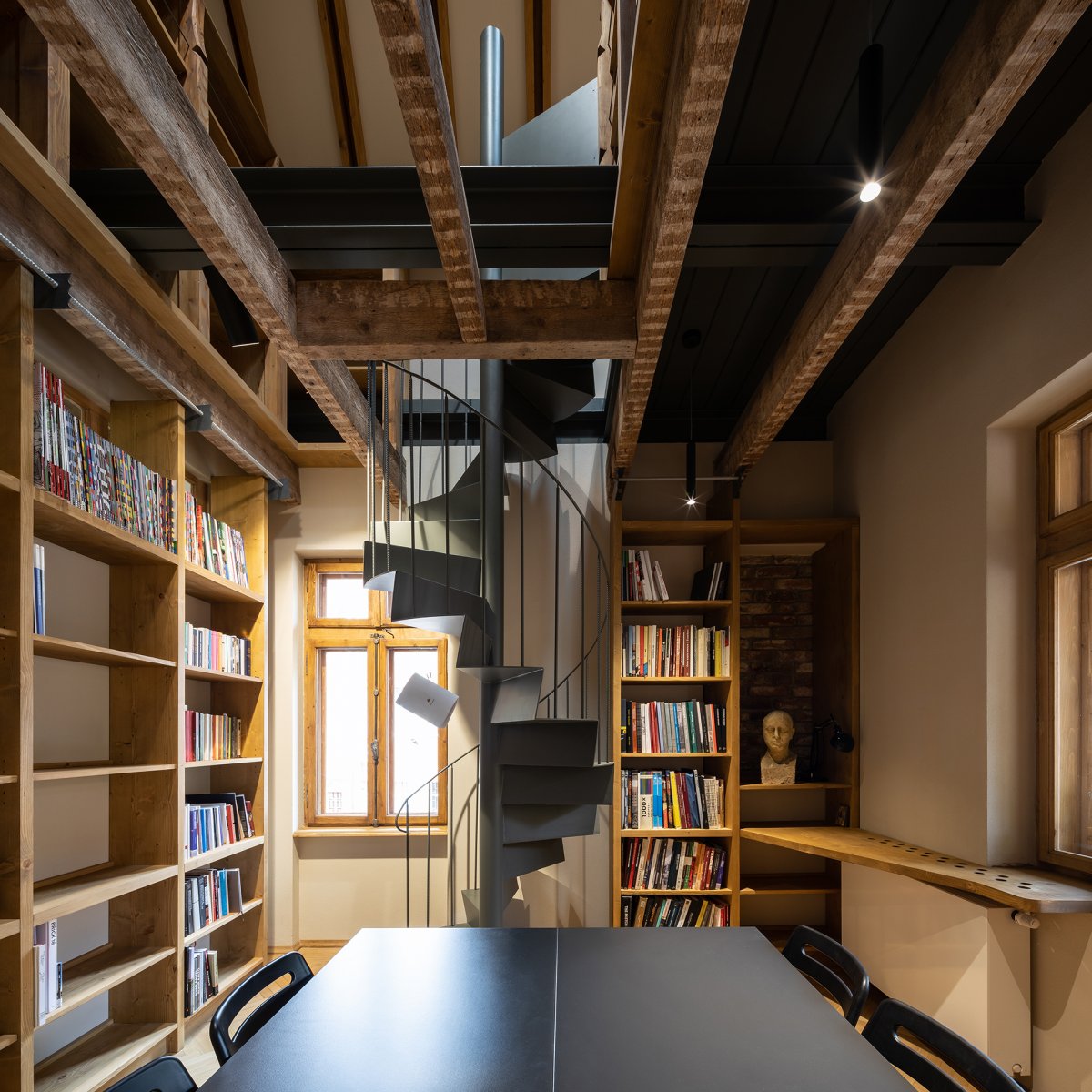
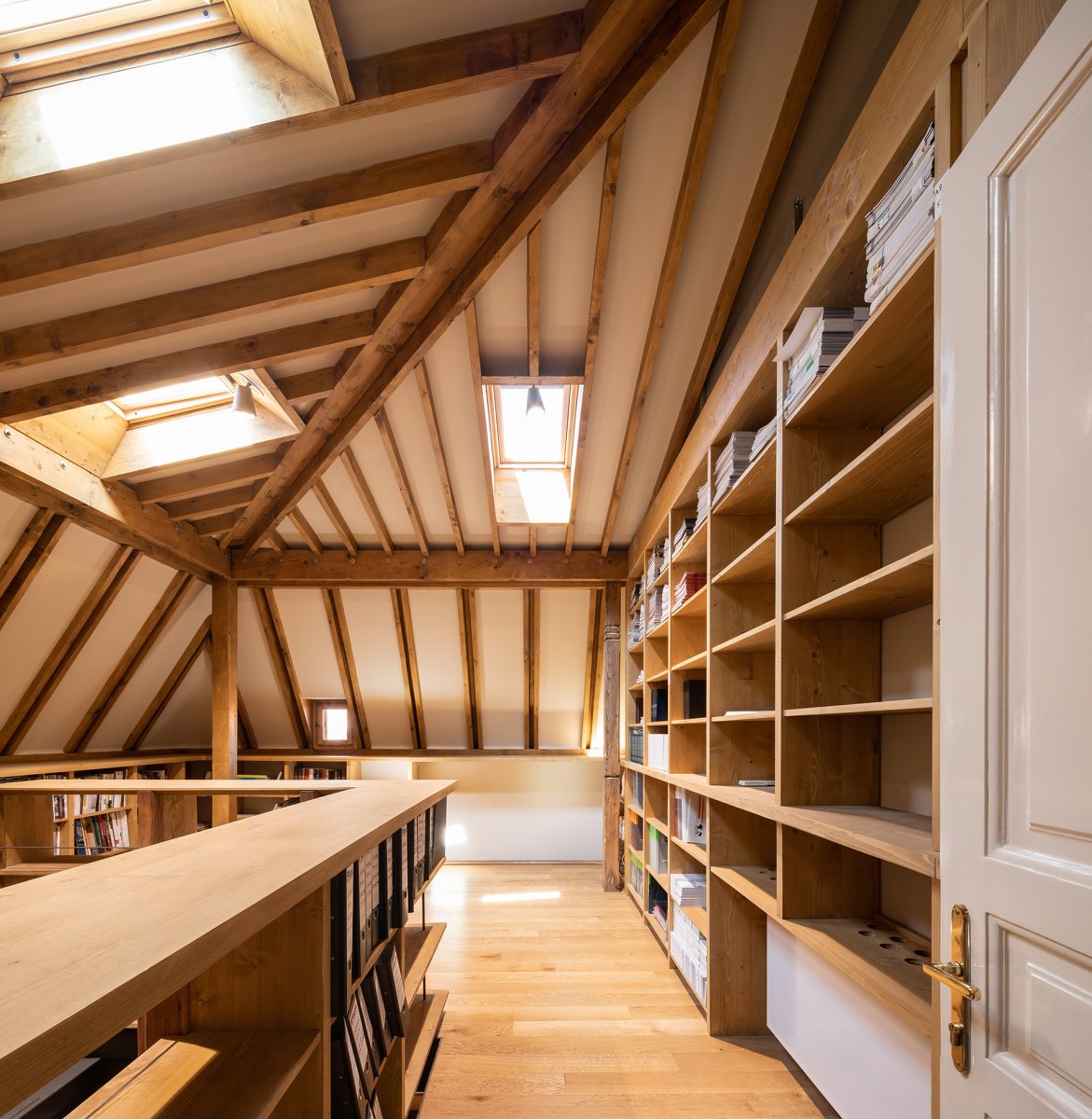

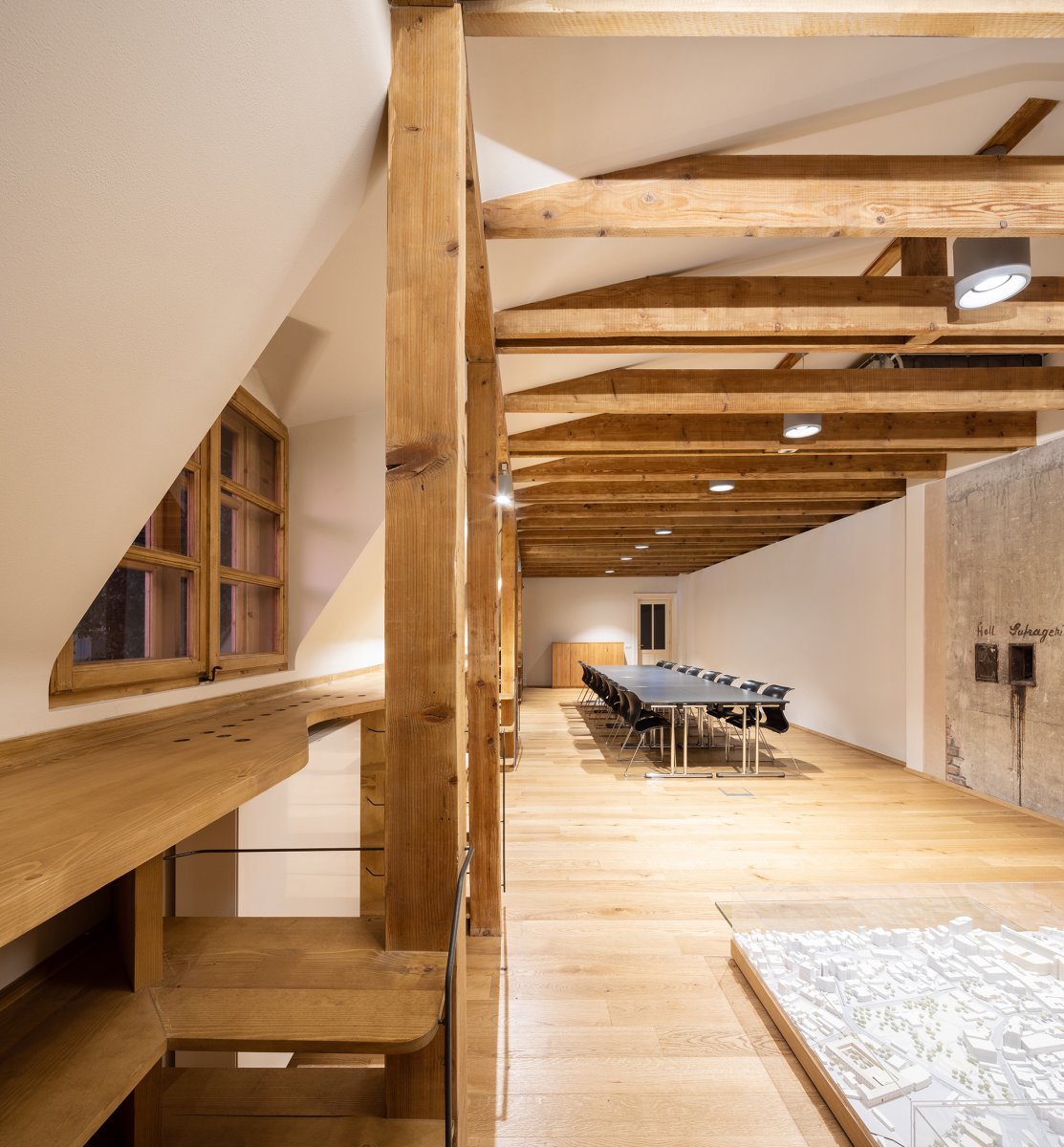
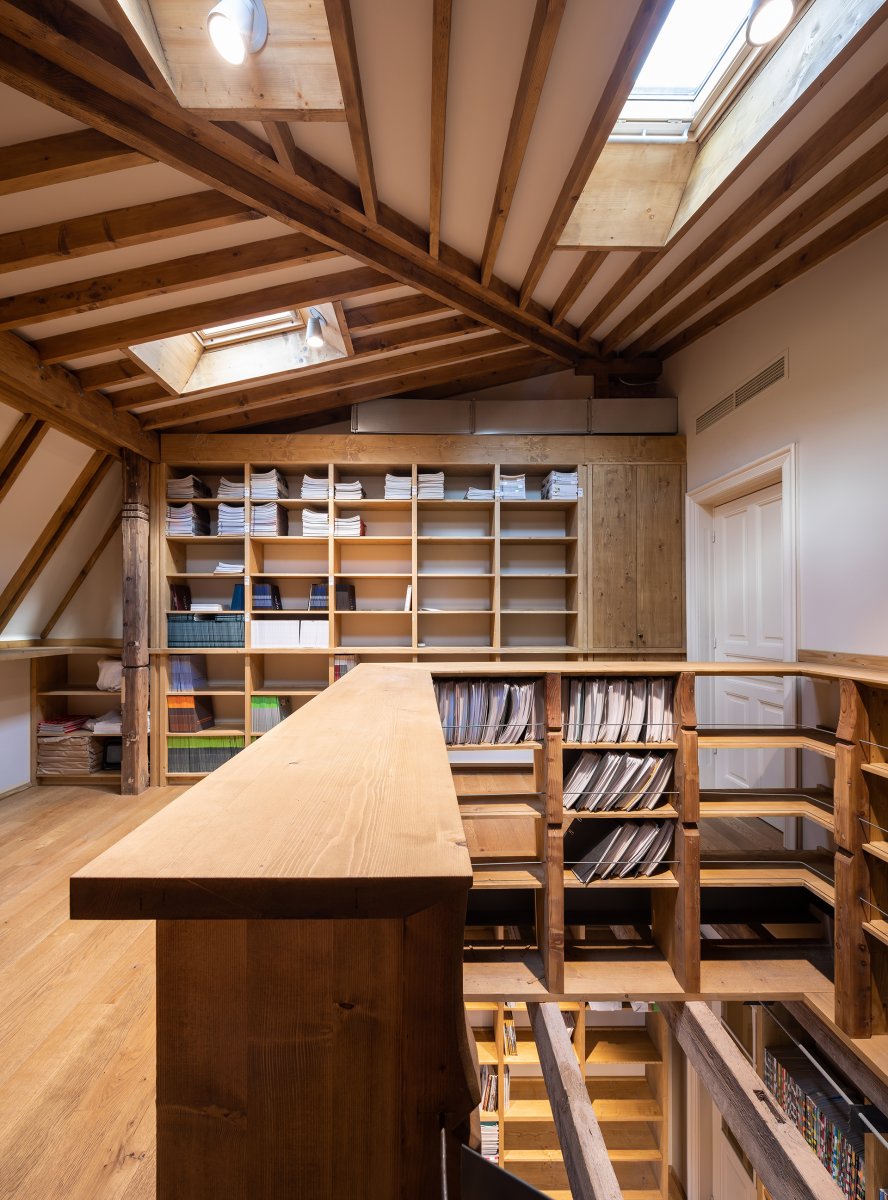
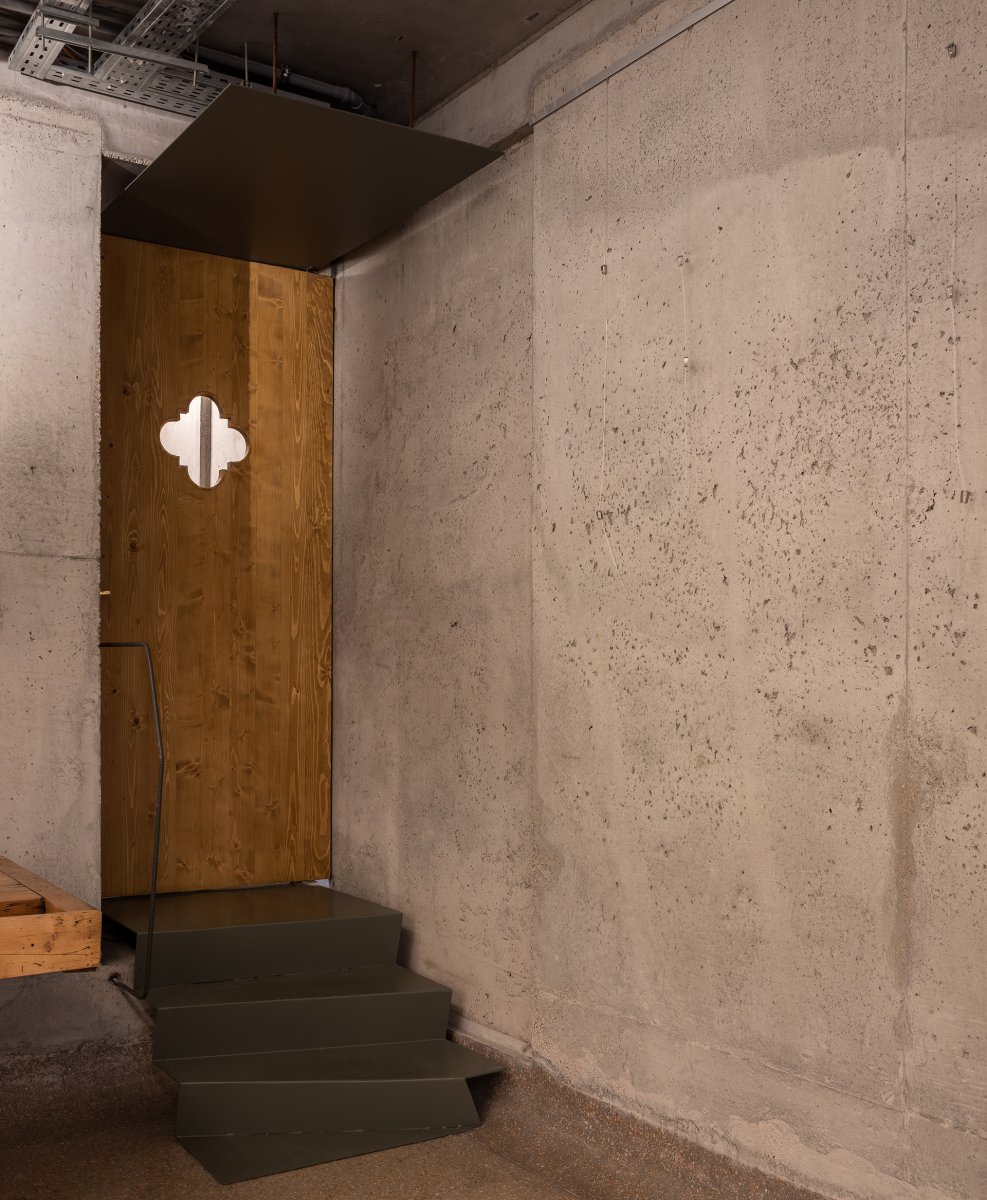
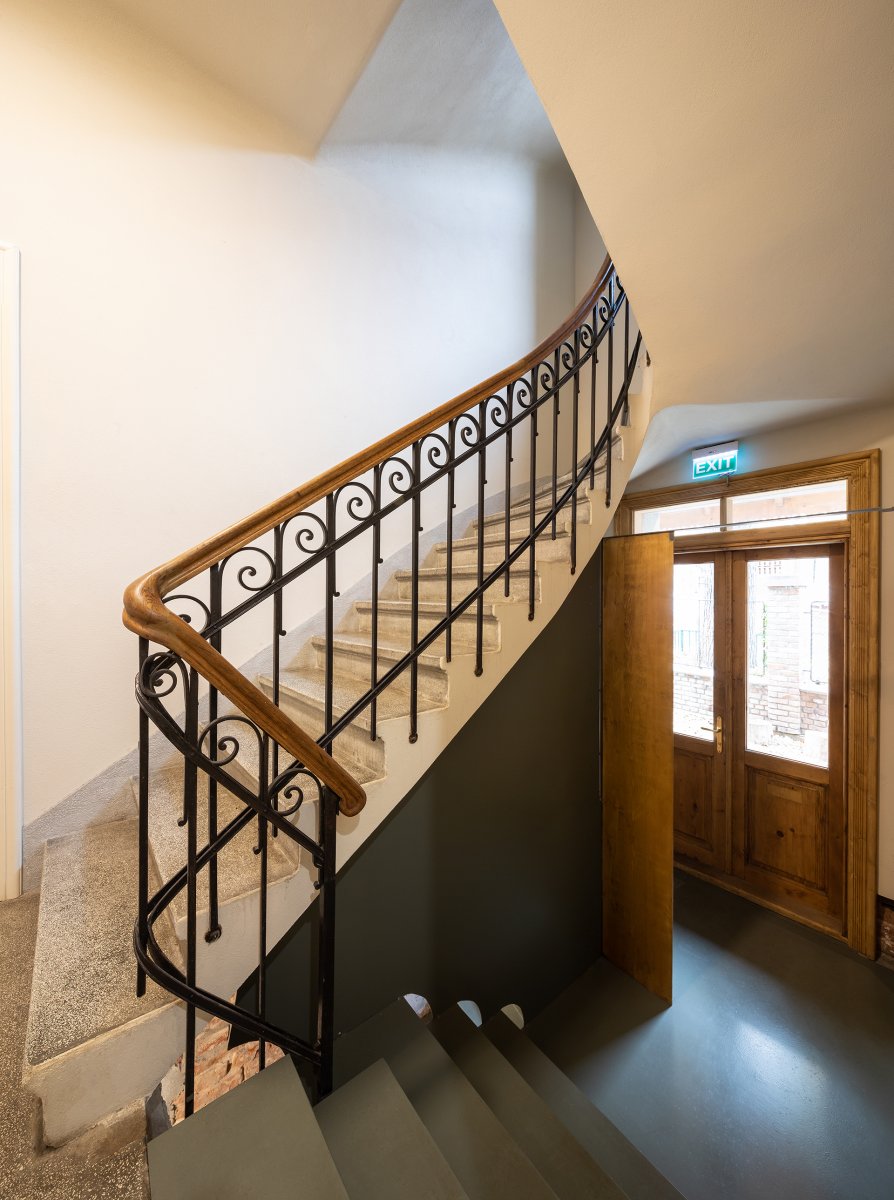
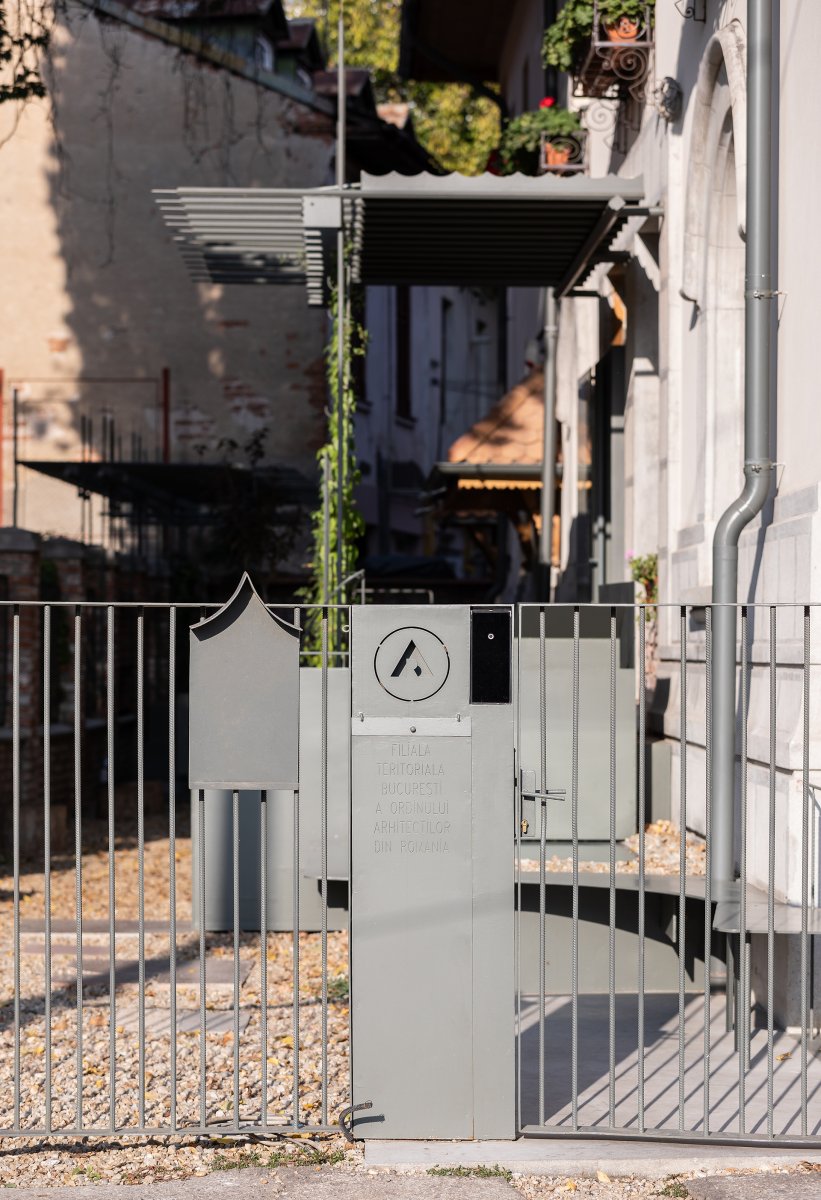
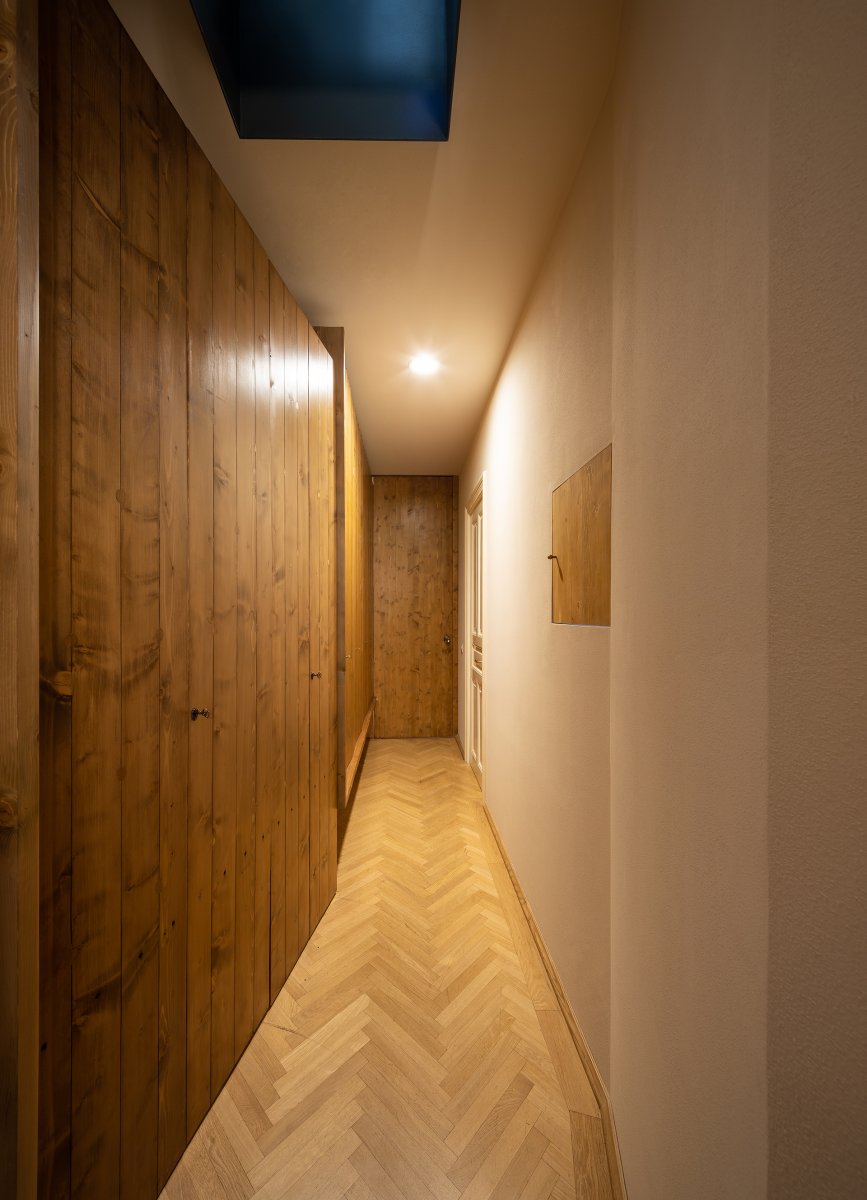
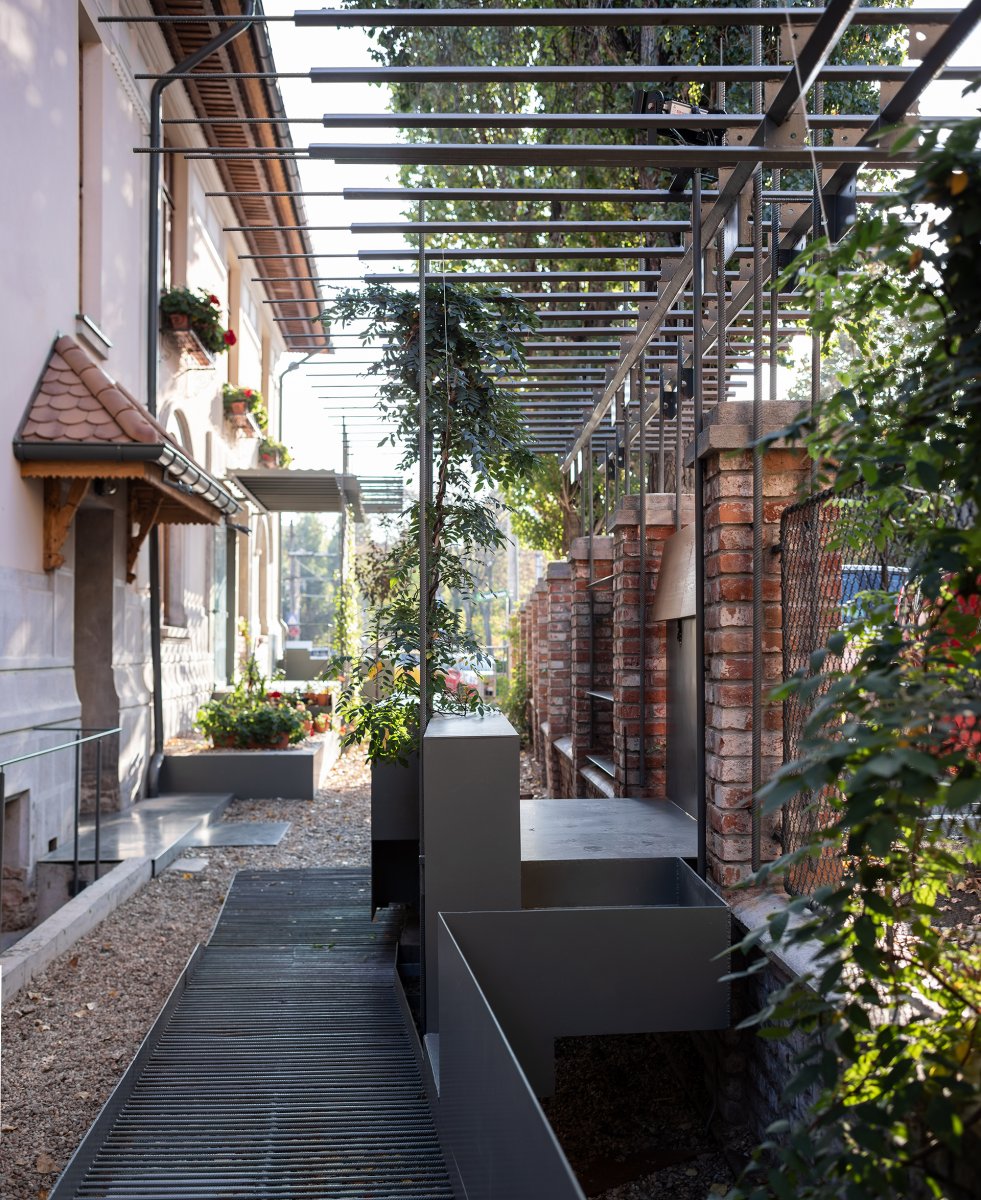
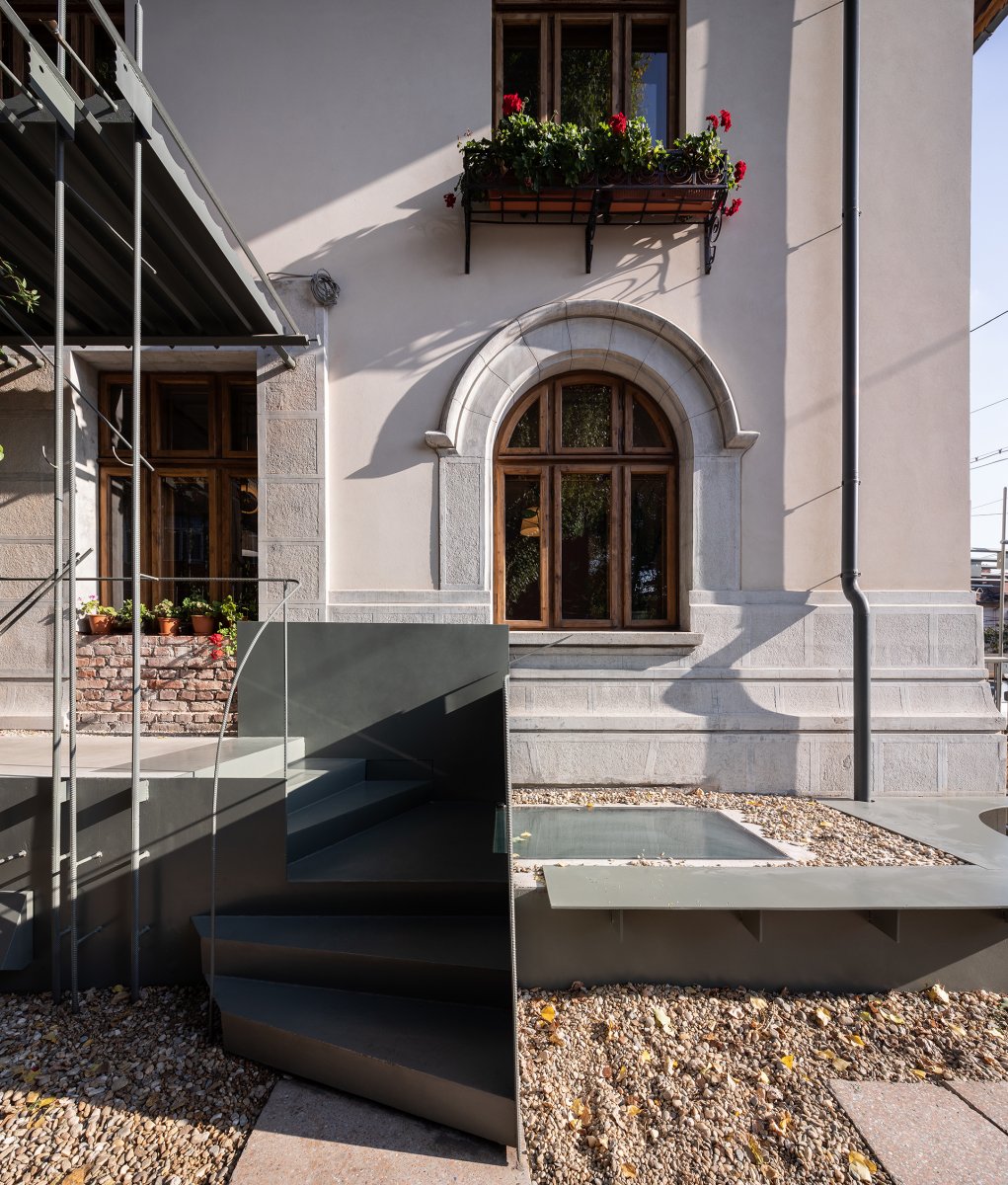
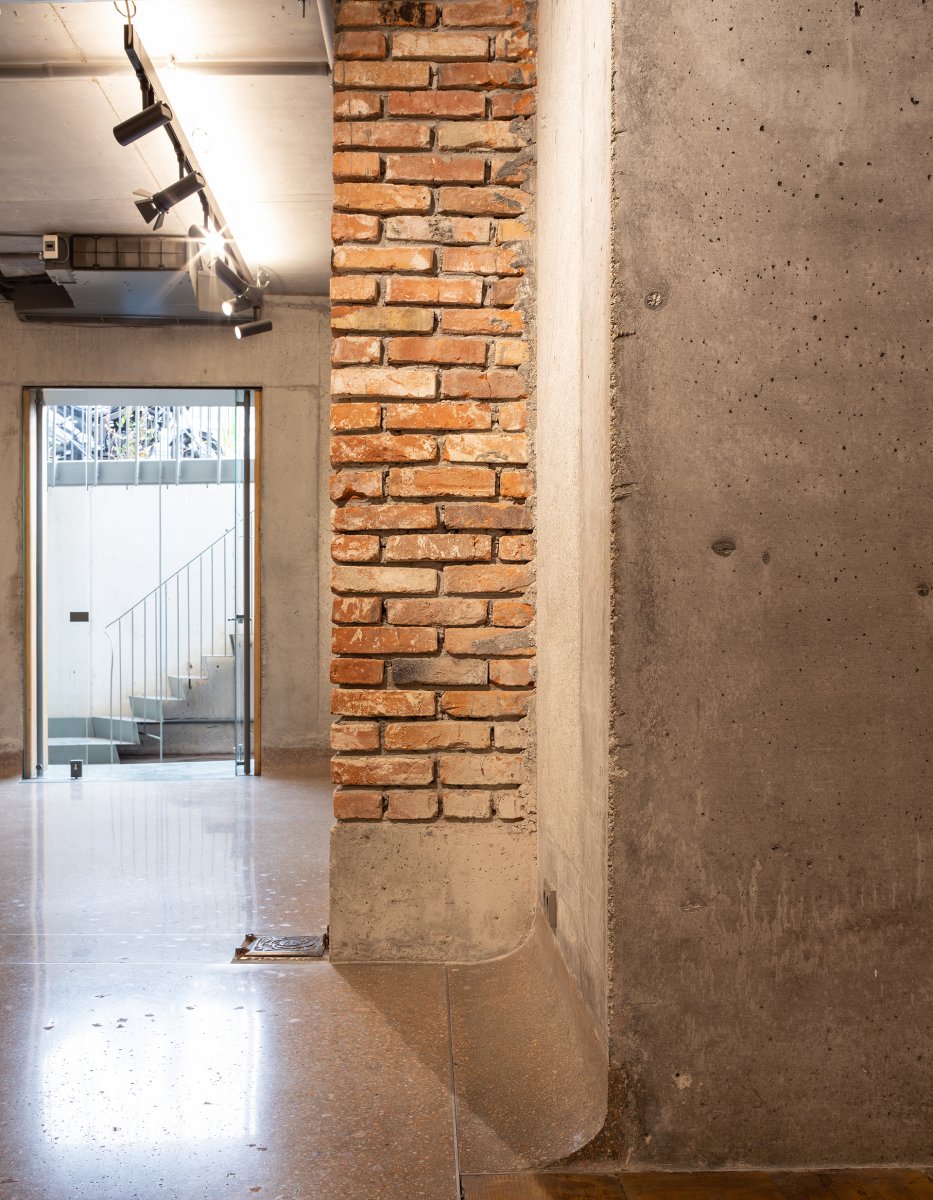
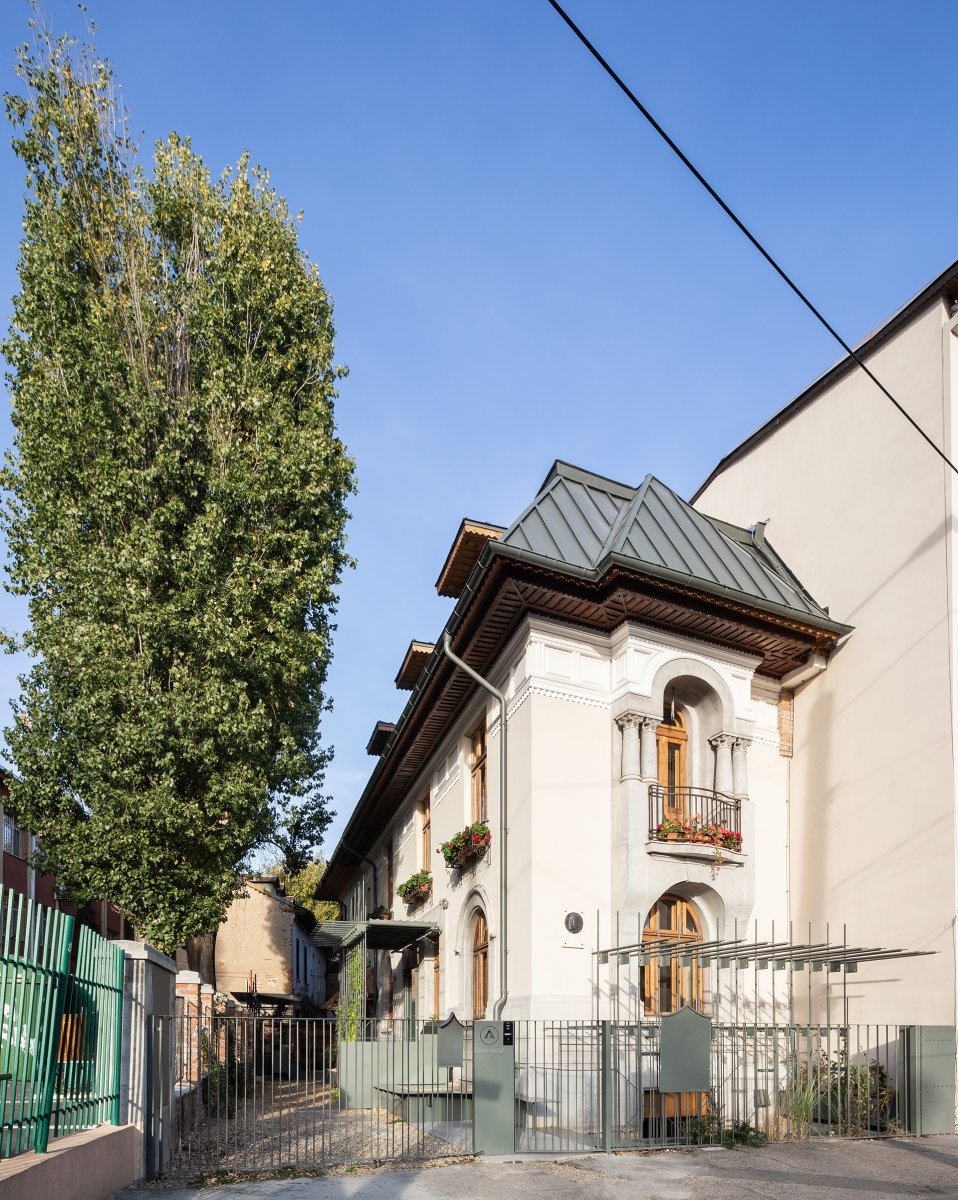
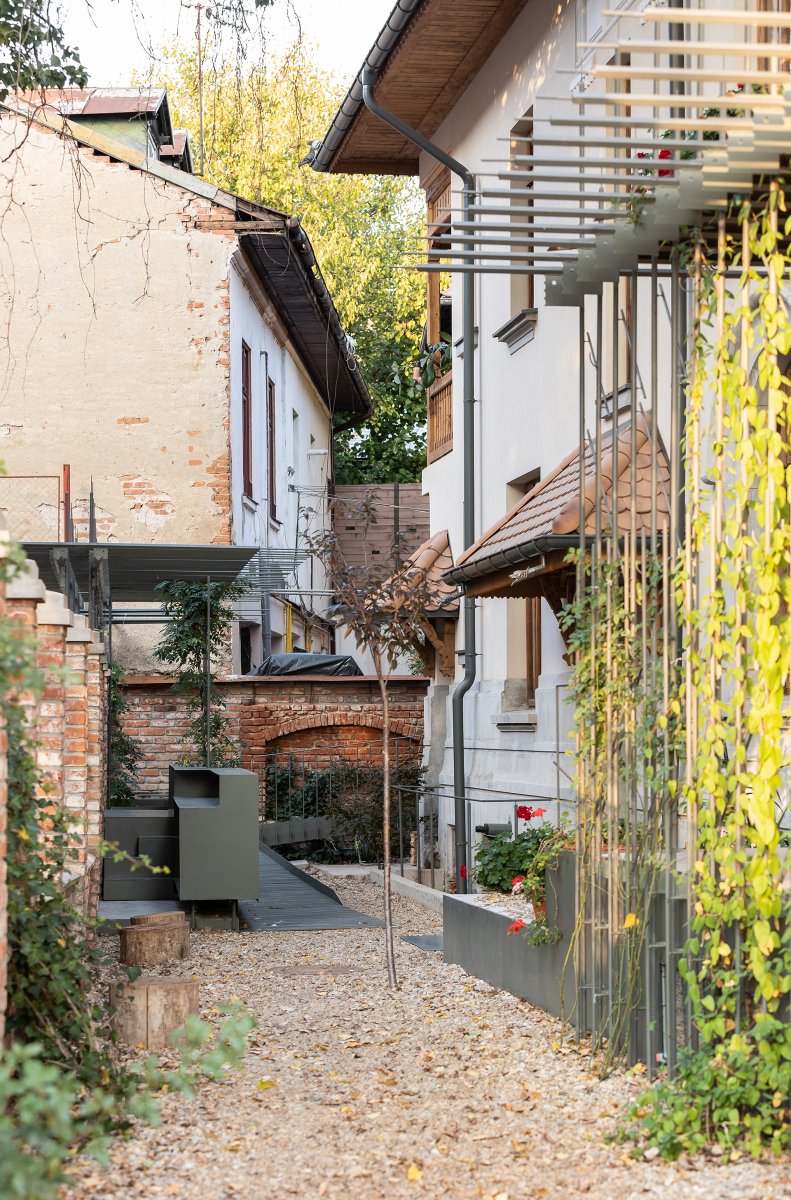
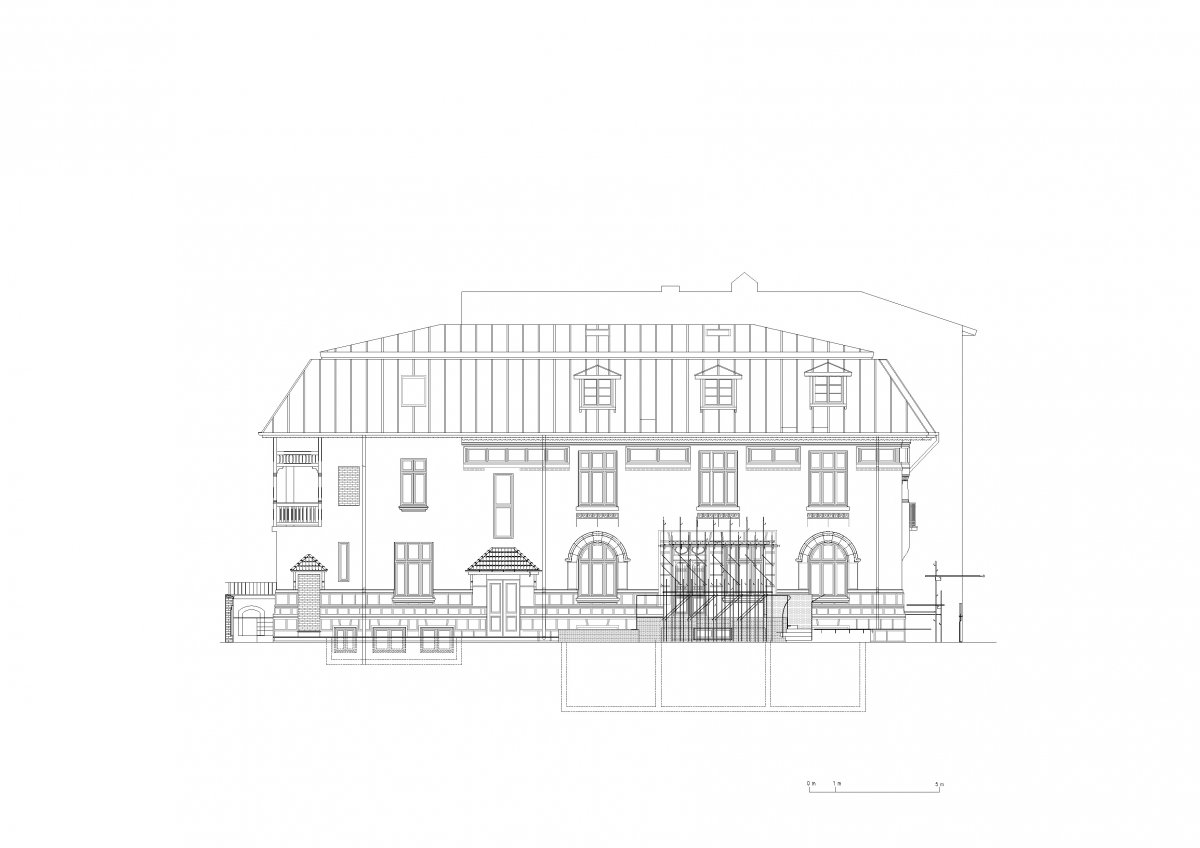
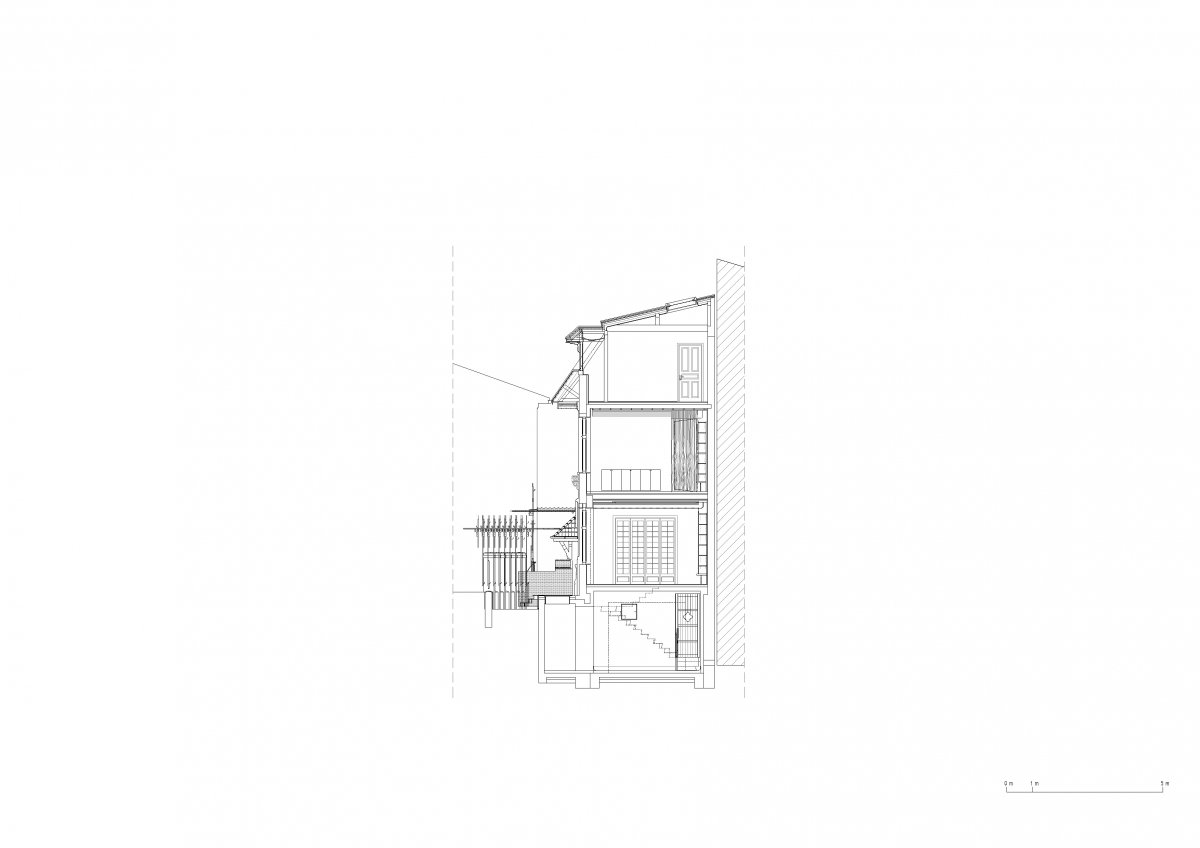
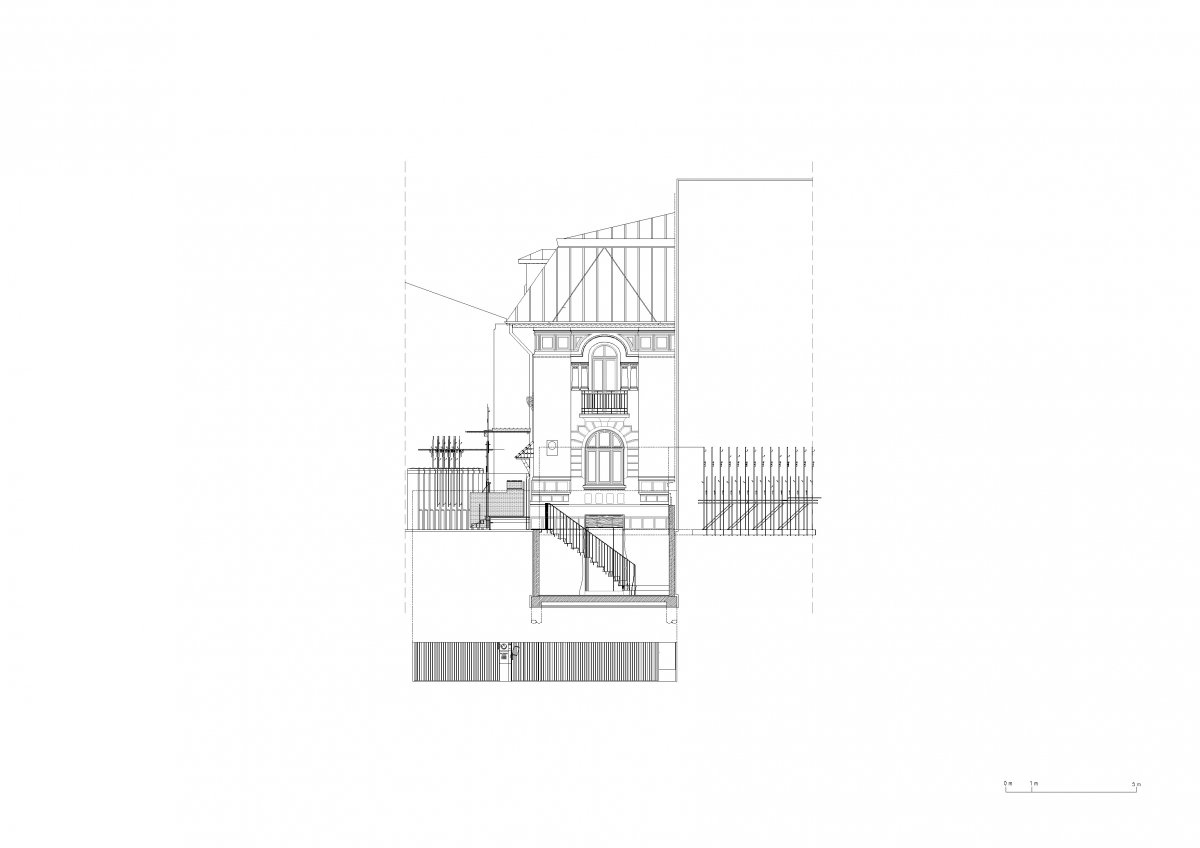
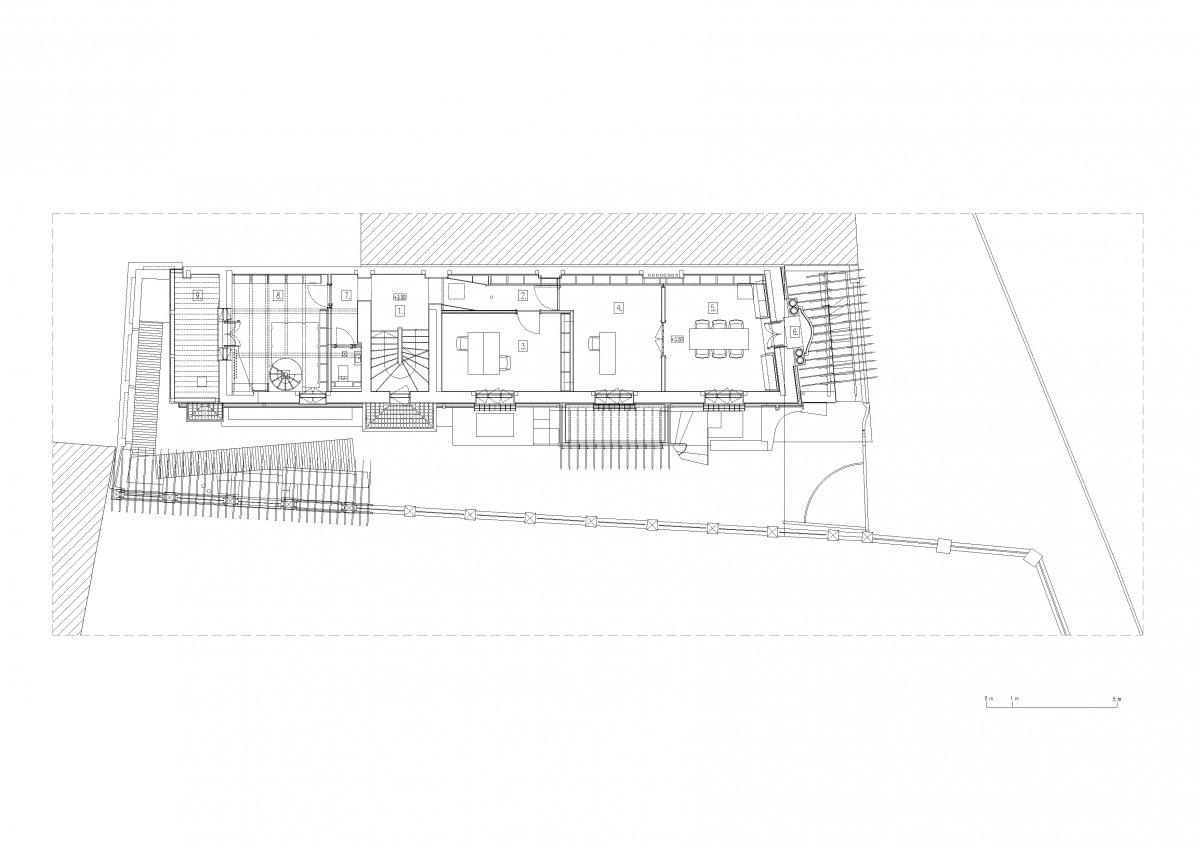
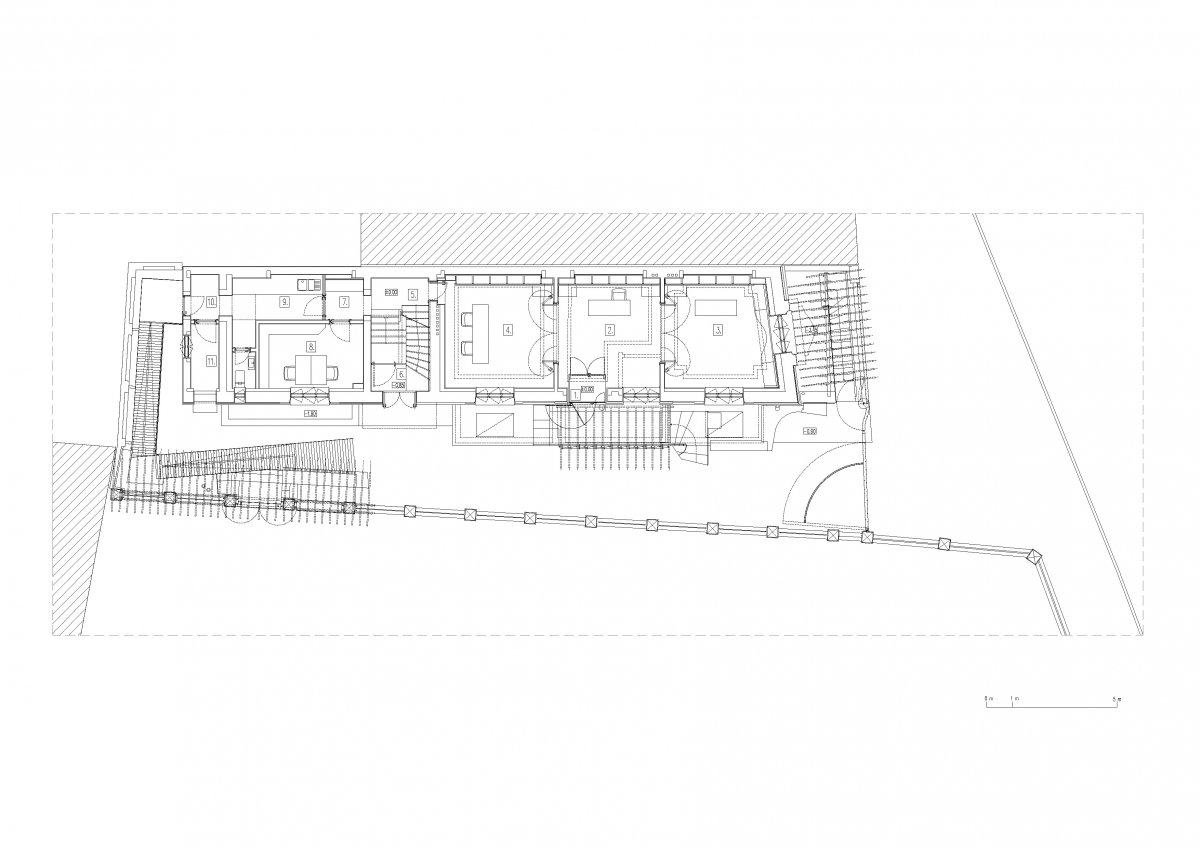
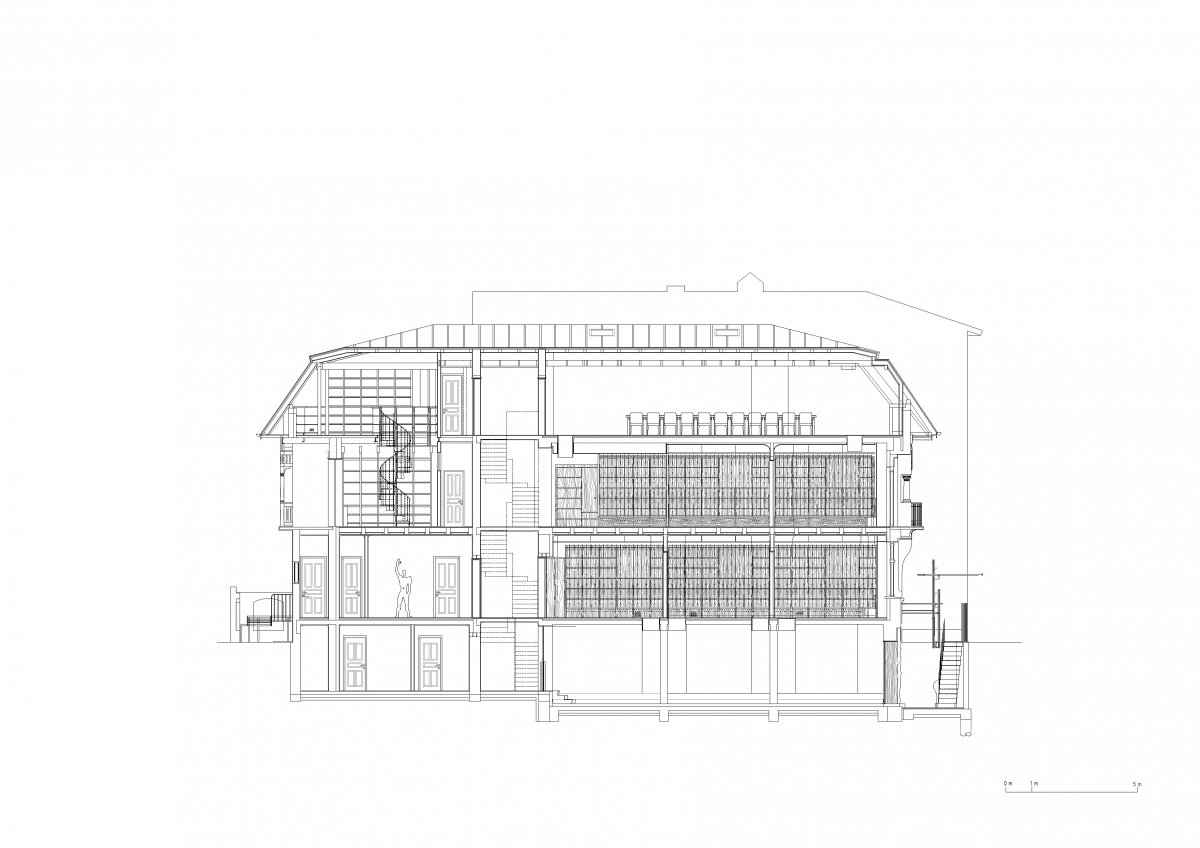
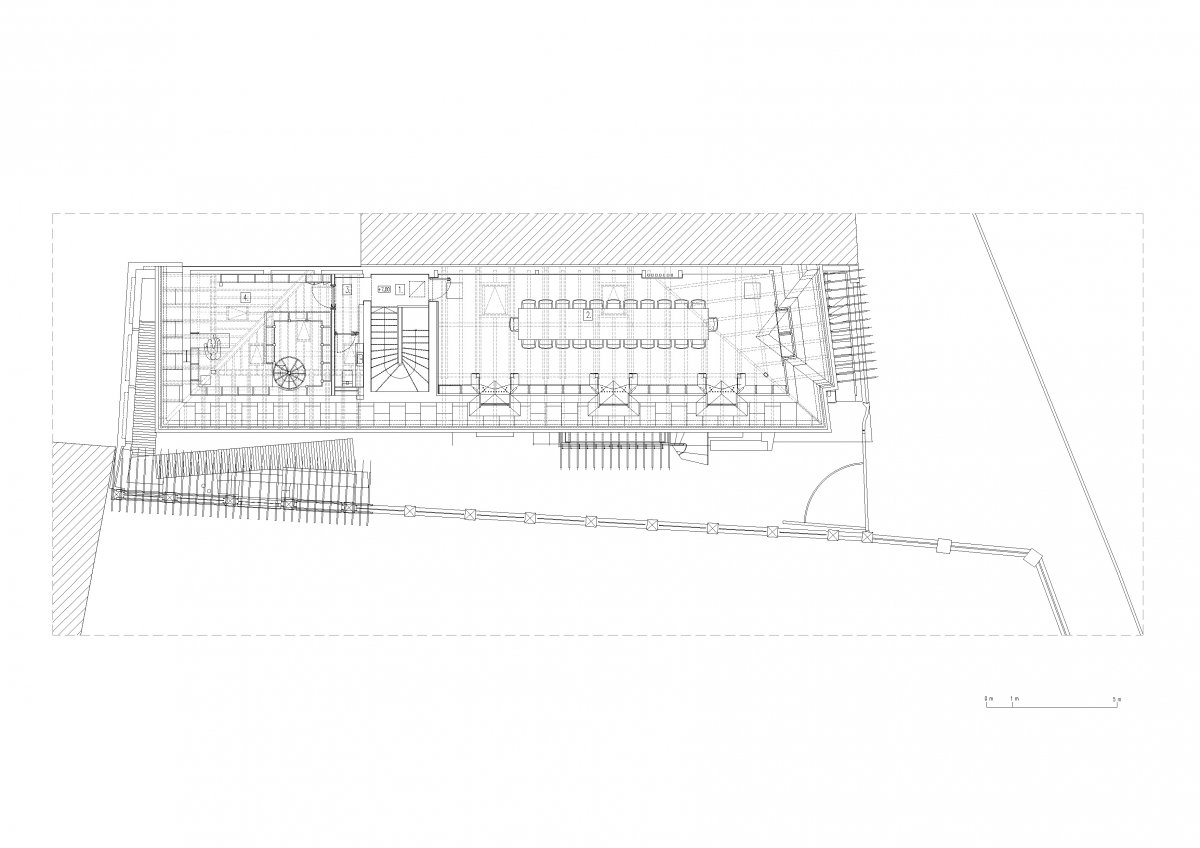
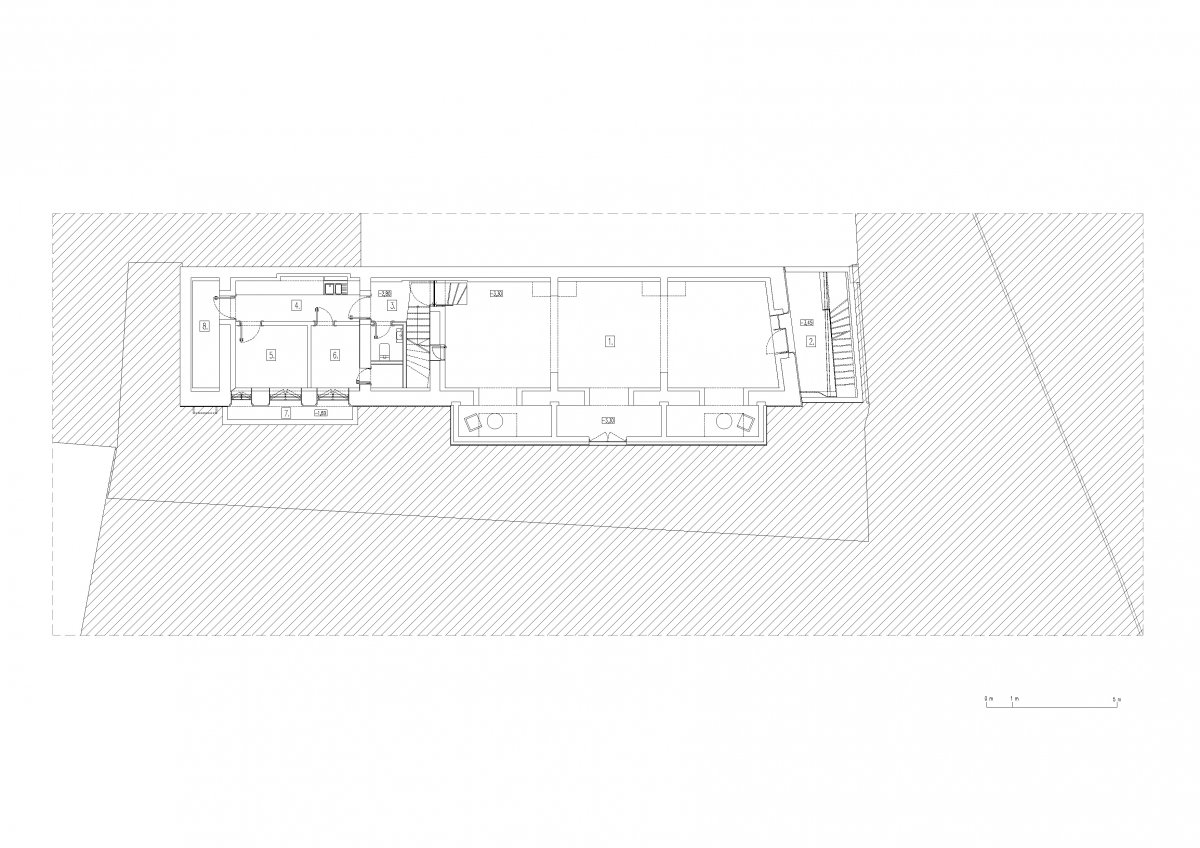
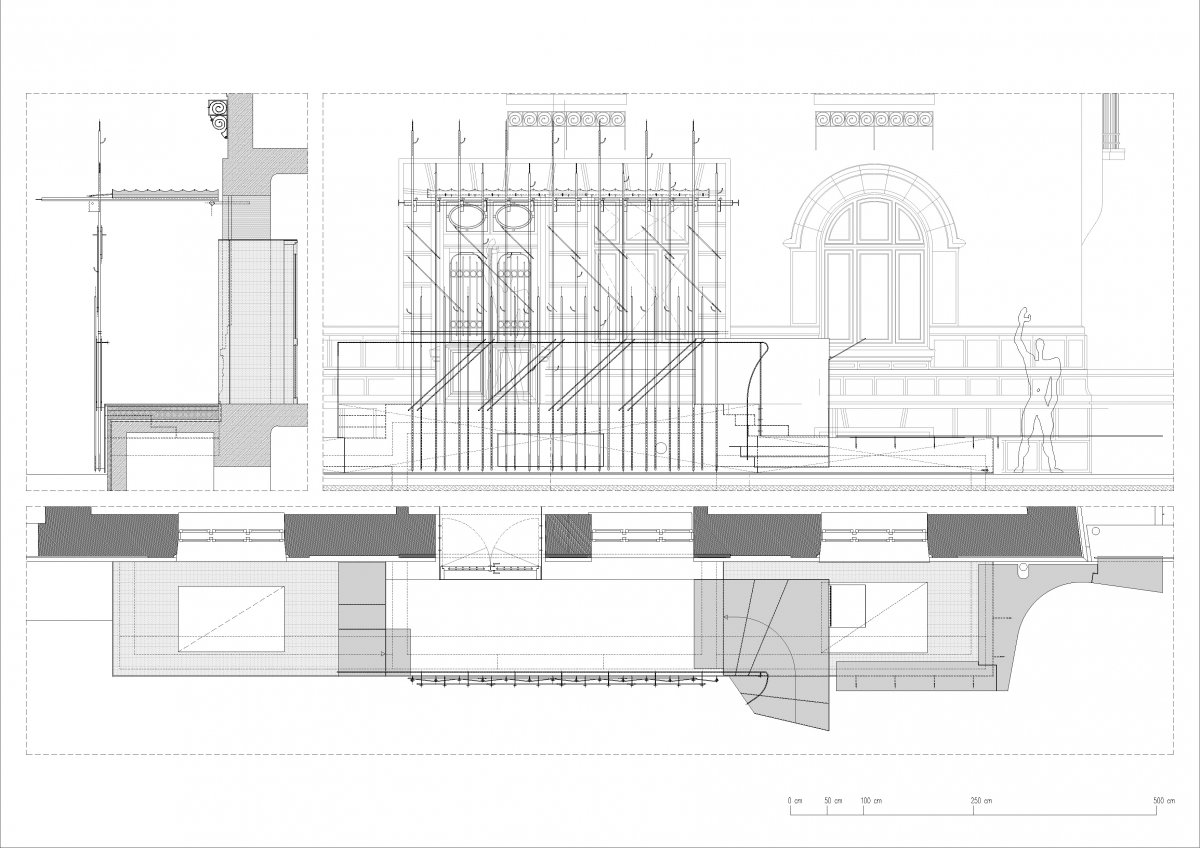
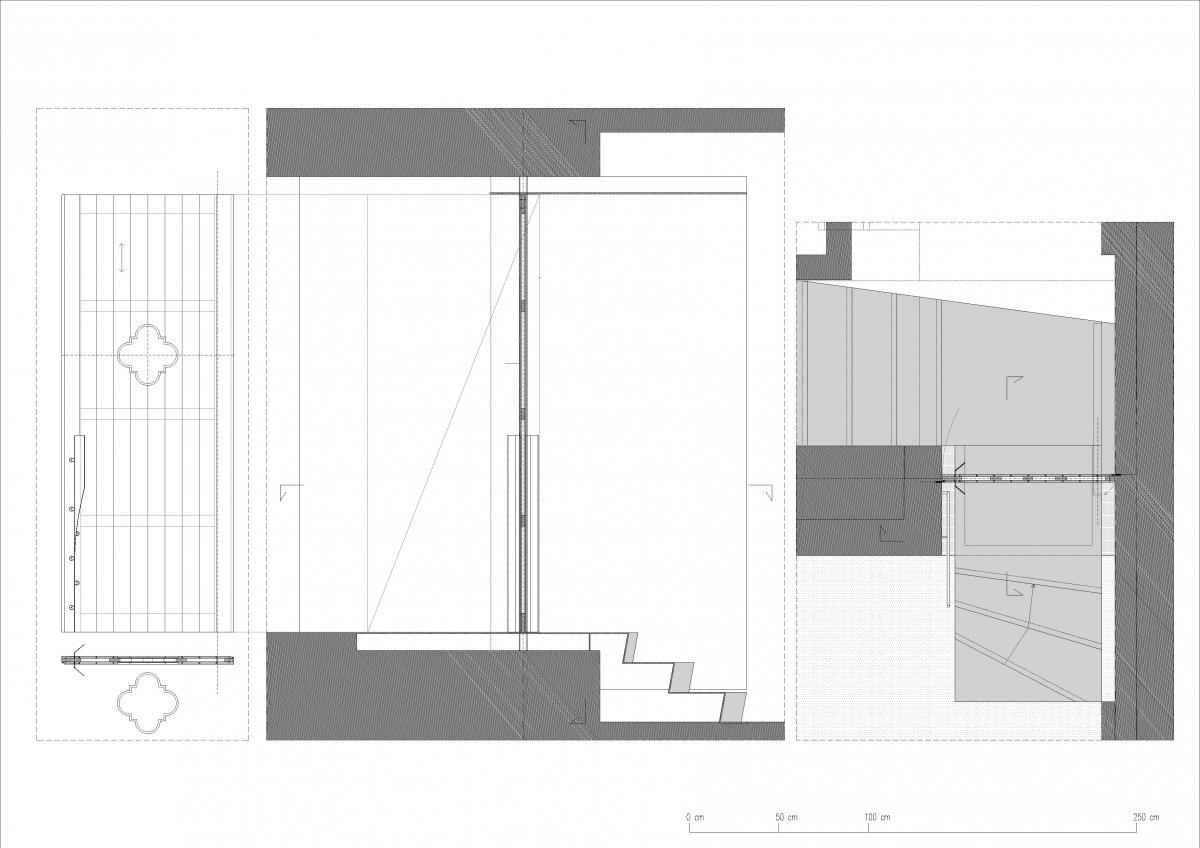
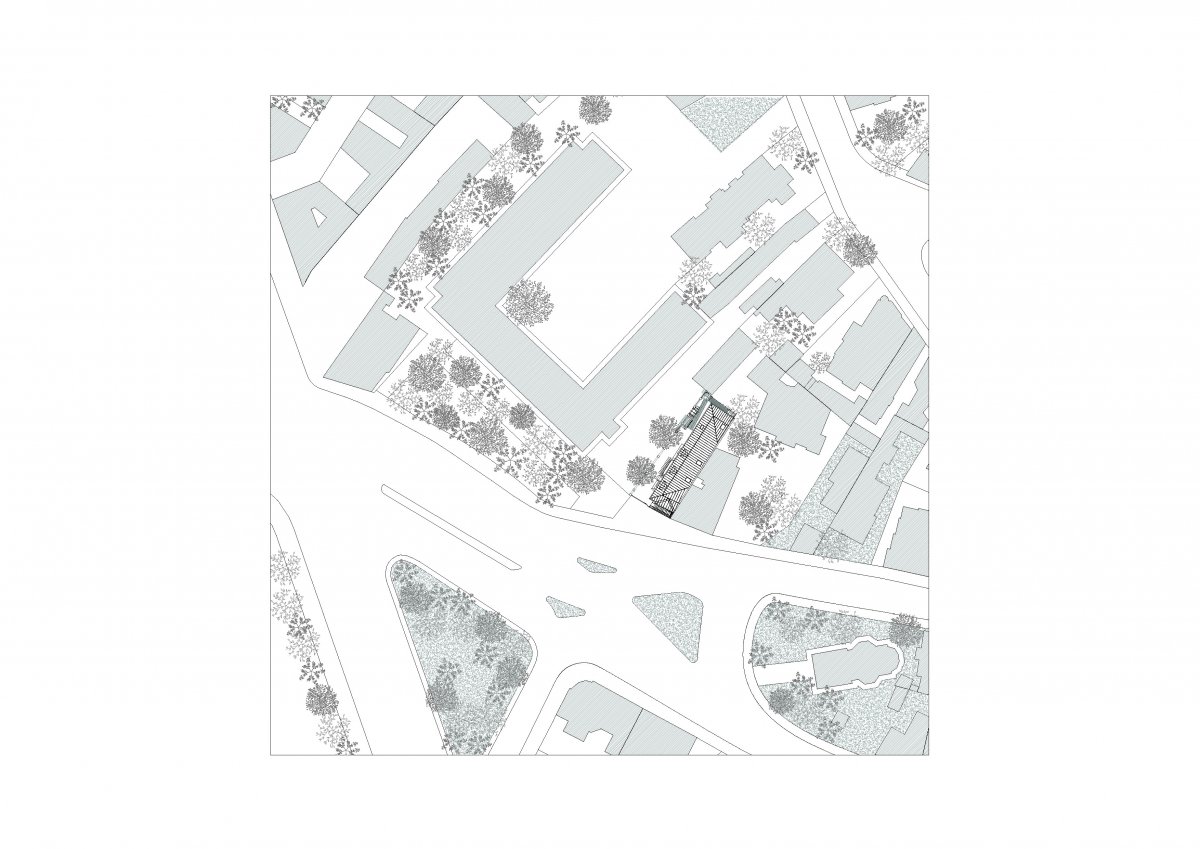
building was not a protected one, therefore the project is a model for working with the
”modest heritage” of our cities. Furthermore, this is not just a building for architects, but a
real part of the city. It is used for exhibitions and other cultural events. This is an example of open architecture, of a professional organisation creating a public urban place. (Ștefan Ghenciulescu PhD)